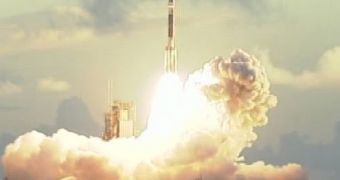When thinking of the International Space Station, it may appear to be more of an American endeavor, given that the largest part of the missions that involve it are conducted by the US, but this is actually not entirely true. Still, the European Space Agency (ESA), a major contributor to the ISS project throughout its lifespan, lacks the necessary means to actually get to it, as it doesn't own a vehicle capable of accomplishing this task, indicates NewScientist.
The Europeans have so far provided ISS' Columbus laboratory module, packed with fluid dynamics, biology and other experiments, as well as flight computer systems that ensure the navigation and environmental control of the station. ESA plans to add more instruments next year, such as the Cupola observatory module (with the largest space viewing windows ever built) and the European Robot Arm (something like the one Phoenix Mars Lander has), both scheduled for launch in 2009.
Nevertheless, Europeans don't really make it into space, unless they cut frustrating deals with Russians or Americans, trading expensive devices for a space ride place. Even worse, given the imminent retirement of the shuttle program, which is set to take place in less than 2 years if not decided otherwise, and the minimum 4-year time gap until the new system is in place, the US space rides are becoming less of an option.
The Russian capsule Soyuz is old and small (only 3 seats), while the remaining option, China's Shenzhou is a tough objective, given the political tension and the mystery floating around it. The alternative of building a new shuttle, in collaboration with Russia and Japan, is highly unlikely because of the recent Russia-Georgia conflict, the financial crisis and the high reluctance of European authorities when it comes to the space missions issue. The only remaining viable approach would be the adaptation of ESA's 20-ton Automated Transfer Vehicle (ATV) to transport people. Future political decisions will determine whether this will become real or not.

 14 DAY TRIAL //
14 DAY TRIAL //